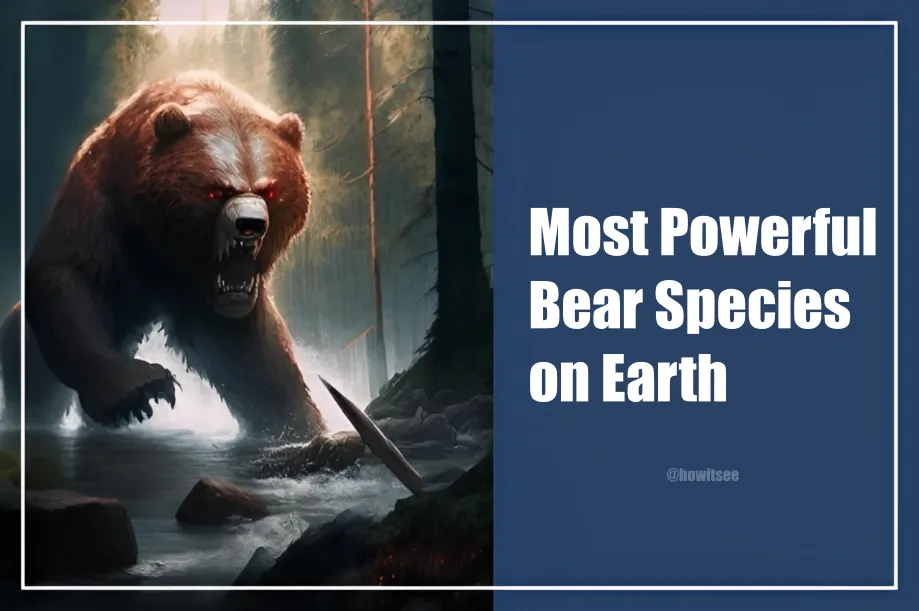Bears are one of the most feared wild animals, known for their incredible strength and capability to cause significant damage. While bears come in various shapes and sizes, all eight extant species possess exceptional survival skills.
They can thrive in harsh environments and take down some of the world’s toughest animals. With their powerful frames and formidable jaws, bears can bludgeon prey into submission and crush objects as sturdy as a bowling ball.
Their voracious appetite allows them to consume almost anything within their reach, including their own flesh. But among these mighty creatures, which bear reigns as the most powerful and dangerous? In this article, we will explore some of the most potent bears on the planet and rank them based on their relative strength.
10 Most Powerful Bear Species on Earth
10. Giant Panda
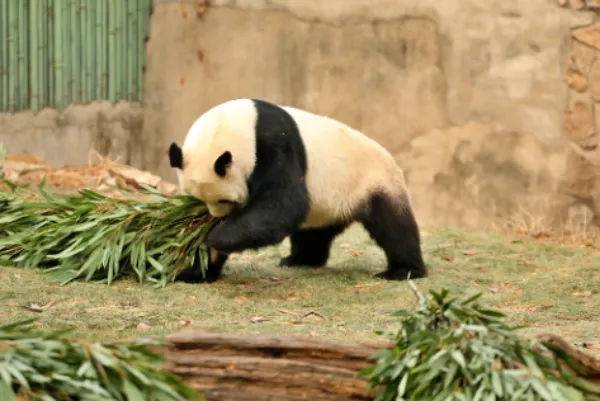
The giant panda, found in China, is recognized as one of the world’s most powerful bears. Despite their relatively small size, with males weighing over 500 pounds (226 kg), giant pandas possess remarkable strength.
Climbing trees and moving rocks weighing over a hundred pounds showcases their physical prowess. The giant panda’s diet primarily consists of bamboo, which they consume up to 80 pounds per day (36 kg).
Though critically endangered, conservation efforts have led to a growing population of this beloved Chinese national treasure, making it a popular attraction in zoos worldwide.
9. Sloth Bear

Smaller than brown and black bears, the sloth bear (Melursus ursinus) stands out with its shaggy mane and sickle-shaped claws.
Weighing between 176 to 320 pounds (80 to 145 kg) for males and 121 to 231 pounds (54 to 104 kg) for females, these bears inhabit the Indian subcontinent, including Nepal, Sri Lanka, and India. Sloth bears are omnivores, primarily feeding on fruit, termites, and ants.
Their elongated lower lip allows them to suck up insects, while their curved claws are ideal for digging up delicious treats. However, habitat loss and environmental damage pose significant threats to this species according to the IUCN.
8. Sun Bear
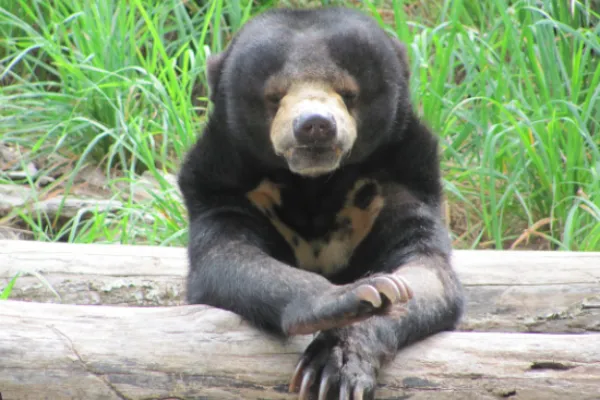
Despite being the smallest member of the bear family, the sun bear is far from insignificant. With a length of up to 5 feet (152 cm) and a weight of up to 150 pounds (68 kg), this small bear remains a formidable predator.
Its arboreal lifestyle enables easy movement among trees, and its predominantly black fur features a distinctive golden patch on the chest resembling a rising sun, giving the bear its name.
Found in the tropical forests of Southeast Asia, sun bears are skilled climbers and are often referred to as honey bears due to their attraction to bee nests, from which they raid honey.
7. Spectacled Bear
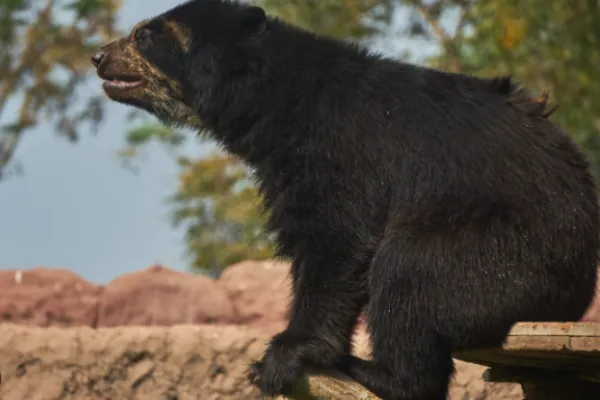
South America’s largest land carnivore, the spectacled bear, holds the unique distinction of being the only bear species on the continent. Primarily limited to the Andes Mountains in countries such as Venezuela, Colombia, Ecuador, Peru, Bolivia, and Argentina, these bears are also known as Andean bears.
Despite their impressive size, spectacled bears are predominantly herbivorous, consuming vegetation, fruits, and occasionally small mammals. Their habitat in the Andean cloud forests is crucial for their survival.5:10
It is a large animal, with males weighing up to 440 pounds (200 kilograms). They range in length from 4 to 6.4 feet (120 to 195 cm). Despite its size, the spectacled bear is an excellent climber who spends a lot of time in trees.
The name “spectacled bear” comes from the distinctive markings around its eyes, which resemble glasses or spectacles.
6. Asiatic Black Bear
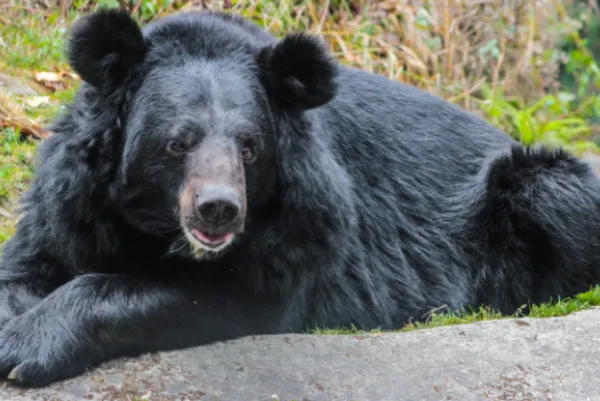
Asiatic black bears, also known as Asian black bears, white-chested bears, or moon bears, derive their names from their origin and distinctive color.
These black bears, scientifically known as Ursus thibetanus, are found throughout southern Asia, including Japan, Nepal, Northern India, Pakistan, Iran, and the mountains of Afghanistan.
They range in height from 4.2 to 6.2 feet (128 to 188 cm) and weigh between 220 and 440 pounds (100 to 200 kg). Omnivorous in nature, Asiatic black bears have a diverse diet that includes fruits, insects, small mammals, birds, beehives, and decayed animal meat.
They are considered more aggressive compared to American and Eurasian black bears and may attack humans and domestic animals when given the opportunity.
5. American Black Bear
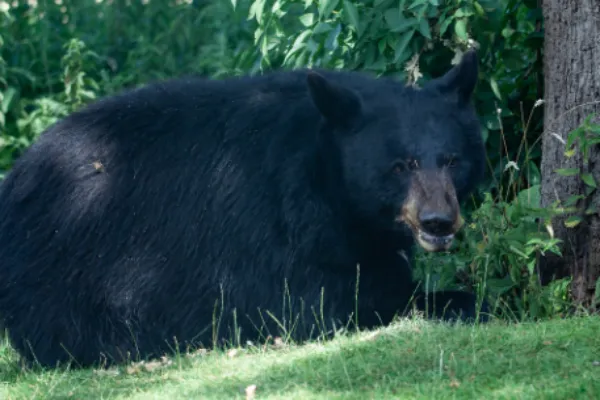
The American black bear (Ursus americanus) is widely distributed throughout North America and is the smallest bear species in the region. Known for their adaptability, American black bears can thrive in various habitats due to their diverse diet.
They range in height from 4 to 6.5 feet (120 to 200 cm), but some individuals can grow larger. Adult male bears weigh between 126 and 551 pounds (57 to 250 kg), while female bears weigh between 90 and 375 pounds (40 to 170 kg).
As omnivores, American black bears consume a wide range of foods, including succulent plants, berries, roots, fish, meat, insects, larvae, and grass. They are primarily non-aggressive and display violent behavior only when threatened.
4. Brown Bears

Brown bears, named for their brown fur that helps them blend into forest environments, are formidable creatures. Adult male brown bears typically weigh between 550 and 660 pounds (250 to 300 kilograms), while adult females weigh between 330 and 550 pounds (150 to 250 kg).
However, some Eurasian brown bears can reach weights up to 1,058 pounds (480 kg) and stand nearly 8.2 feet (251 cm) tall.
Historically found throughout Eurasia, their current range is primarily limited to northern and eastern Europe, Russia, the Baltic states, the Balkans, and isolated populations in Spain, Italy, France, southwest Asia, China, and Japan.
Brown bears are known to feed on roots, berries, nuts, insects, and fish and have been observed attacking livestock and hunting small and large mammals. The IUCN classifies them as Least Concern, although declining populations in certain regions raise concerns.
3. Grizzly Bear

Grizzly bears, a subspecies of brown bears, earn their name from their grizzled appearance. Found throughout North America, these bears exhibit scavenging behavior and consume a range of prey, including salmon, deer, squirrels, marmots, bison, mice, and moose.
Adult grizzlies can grow to be 3.4 to 9 feet (106 to 274 cm) long, with males averaging 400 to 790 pounds (181 to 358 kg) in weight. Remarkably strong, a grizzly bear possesses the strength of five humans and can lift over 1,110 pounds, surpassing its own body weight.
With a bite force of 1160 pounds per square inch (PSI), grizzlies can crush a bowling ball. While human attacks by grizzly bears are rare, documented cases typically involve self-defense or protection of cubs and food sources.2. Kodiak Bear
2. Kodiak Bear

The Kodiak bear, also known as the Alaskan brown bear, is the largest subspecies of brown bears and ranks second in size only to the polar bear.
Adult Kodiak bears typically weigh between 660 and 1320 pounds (300 and 600 kg), with the largest recorded wild bear weighing a staggering 1,656 pounds (751 kg).
These bears are exclusively found in the Kodiak Archipelago, making it the only place on Earth where they can be observed. The name “Kodiak” is derived from the archipelago itself.
Kodiak bears have a varied diet that includes berries, seaweed, beach-dwelling invertebrates, and salmon.
The population of Kodiak bears is estimated to be over 3,000, and their numbers are gradually increasing. Currently, they are classified as Least Concern by the IUCN, indicating a relatively stable conservation status.
1. Polar Bear
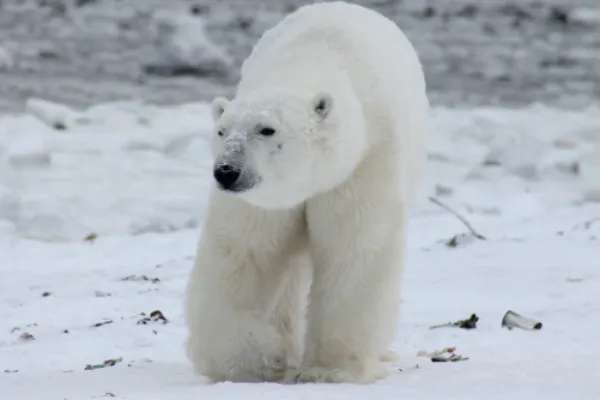
The polar bear, also known as the ice bear, predominantly inhabits the Arctic Circle, including the Arctic Ocean and its surrounding land and seas.
This remarkable species holds the title of the strongest bear species. Adult polar bears can reach heights of up to 11 feet (335 cm) when standing on their hind legs and weigh up to 1,500 pounds (680 kg).
Polar bears possess a formidable bite strength of 1,235 pounds per square inch (PSI), allowing them to exert tremendous force. Their strength is further evident in their ability to lift icebergs weighing over 1,000 pounds using their powerful jaws.
As carnivores and top predators, polar bears primarily hunt seals. They patiently wait for seals to surface on the sea ice to breathe before launching their attack.
While, generally not aggressive toward humans, polar bears may become dangerous if they are hungry and perceive humans as potential prey. Caution and respect are essential when encountering these magnificent creatures in their natural habitat.
In conclusion, bears are a diverse group of animals, with eight different species found around the world.
Each species has its own unique characteristics and adaptations, which allow them to thrive in a variety of habitats. From the polar bear’s thick fur to the grizzly bear’s powerful claws, bears are truly awe-inspiring creatures.
Understanding the power of bears can help us to appreciate their importance in the natural world. Bears play a vital role in their ecosystems, helping to disperse seeds, control populations of other animals, and recycle nutrients.
By understanding and respecting bears, we can help to ensure their survival for future generations. That’s all for now, we hope you like our post.
Also Read:

Meet Monty, the visionary founder of How It See, being an engineering student, he’s fueled by an insatiable curiosity about the world around him. He is captivated by an eclectic correlation between animal groups, science, and nature, and this fascination drives his quest for understanding.
After completing his degree, he’s set on a mission to delve deep into the realm of nature, accumulating knowledge to share with you through his writing. In the meantime, he loves to watch anime and read anime.
